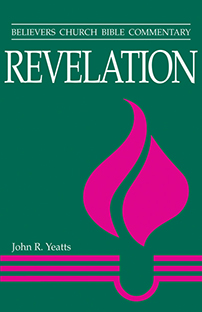Christology of Revelation (in Revelation)
![]() Home A B C D E F G H I J K L M N O P Q R S T U V W X Y Z Abbreviations Glossary
Home A B C D E F G H I J K L M N O P Q R S T U V W X Y Z Abbreviations Glossary
Revelation has a wealth of titles for Christ: faithful witness, firstborn of the dead, ruler of the kings of the earth (1:5); Alpha and Omega (1:8; 21:6; 22:13); who walks among the seven golden lampstands (1:13; 2:1); Son of Man (1:13; 14:14); who has eyes like a flame of fire (1:14; 2:18); whose feet are like burnished bronze (1:15; 2:18); one who holds the seven stars (1:16; 2:1); who has the sharp two-edged sword (1:16; 2:12); who has the seven spirits of God and the seven stars (1:16; 3:1); first and last (1:17; 2:8; 22:13); who was dead and came to life (2:8); Son of God (2:18), holy one, true one, one who holds the key of David, who opens and no one will shut, who shuts and no one opens (3:7); Amen, faithful and true witness, origin of God’s creation (3:14); lion of the tribe of Judah, root of David (5:5; 22:16); Lamb (5:6, 8, 12, 13; 6:1, 16; 7:9, 10, 14, 17; 12:11; 13:8; 14:1, 4, 10; 15:3; 17:14; 19:7, 9; 21:14, 22, 23; 22:1, 3); King of Kings, Lord of Lords (17:14; 19:16); faithful and true (19:11); the beginning and the end (21:6; 22:13); and so forth (see Johns, 1998:189-93, for a discussion of the political overtones of these titles and for the case that Revelation is “a subversive resistance manual”; Weaver, 1994a:279-81; 2001:20-33, 73-74, for a treatment of the Christus Victor theme in Revelation; and Slater, 1999, for consideration of the christological images Son of Man, Lamb, and Divine Warrior).
Indeed, Revelation has the highest Christology in the New Testament (see Beasley-Murray 1947:23-29). John places Christ on par with God; the two names are used synonymously (3:21; 6:16; 7:9, 10, 17; 14:1; 21:22, 23; 22:1, 3). As a Jew, John was an inflexible monotheist; placing Christ on par with God shows Christ’s unique position and marks the beginning of Trinitarianism. John also adds the Holy Spirit to this Godhead at least by implication (1:4-5; 19:10; 22:17). Thus, John lays the basis, in a rudimentary form, for future formulations of the doctrine of the Trinity.
| —John R. Yeatts |
